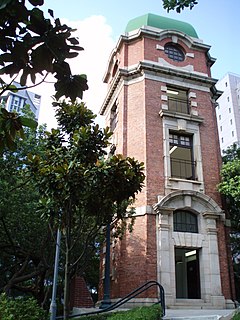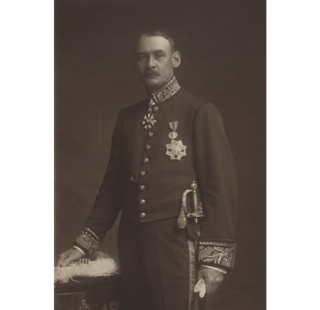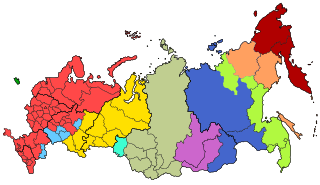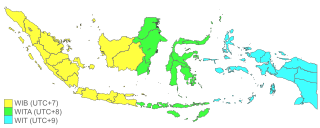
A time zone is an area which observes a uniform standard time for legal, commercial and social purposes. Time zones tend to follow the boundaries between countries and their subdivisions instead of strictly following longitude, because it is convenient for areas in frequent communication to keep the same time.

Japan Standard Time, or Japan Central Standard Time, is the standard time zone in Japan, 9 hours ahead of UTC. Japan does not observe daylight saving time, though its introduction has been debated on several occasions. During World War II, the time zone was often referred to as Tokyo Standard Time.
Time in New Zealand is divided by law into two standard time zones. The main islands use New Zealand Standard Time (NZST), 12 hours in advance of Coordinated Universal Time (UTC) / military M (Mike), while the outlying Chatham Islands use Chatham Standard Time (CHAST), 12 hours 45 minutes in advance of UTC / military M^ (Mike-Three).

Hong Kong Time is the time in Hong Kong, observed at UTC+08:00 all year round. The Hong Kong Observatory is the official timekeeper of the Hong Kong Time. It is indicated as Asia/Hong_Kong in the IANA time zone database.

Australia uses three main time zones: Australian Western Standard Time, Australian Central Standard Time, and Australian Eastern Standard Time. Time is regulated by the individual state governments, some of which observe daylight saving time (DST). Australia's external territories observe different time zones.

Sir Edward Lewis Brockman was a colonial administrator who served briefly as the Colonial Secretary to the Straits Settlements in 1911 and was the chief secretary to the Federated Malay States (FMS) from 1911 to 1920. He announced the establishment of the Town Planning Committee to oversee Kuala Lumpur town planning service. He was descendant of the English Brockman family. Brockman Road in Kuala Lumpur was named after him, where the former Prime Minister office was located.

There are eleven time zones in Russia, which currently observe times ranging from UTC+02:00 to UTC+12:00. Daylight saving time (DST) has not been used in Russia since 26 October 2014. From 27 March 2011 to 26 October 2014, permanent DST was used.
Thailand follows UTC+07:00, which is 7 hours ahead of UTC. The local mean time in Bangkok was originally UTC+06:42:04. Thailand used this local mean time until 1920, when it changed to Indochina Time, UTC+07:00; ICT is used all year round as Thailand does not observe daylight saving time. Thailand shares the same time zone with Vietnam, Cambodia, Laos, Christmas Island, and Western Indonesia.
UTC+07:20 is an identifier for a time offset from UTC of +07:20.

The Indonesian archipelago geographically stretches across four time zones from UTC+06:00 in Aceh to UTC+09:00 in Papua. However, the Indonesian government recognizes only three time zones in its territory:
Malaysian Standard Time or Malaysian Time (MYT) is the standard time used in Malaysia. It is 8 hours ahead of Coordinated Universal Time (UTC). The local mean time in Kuala Lumpur was originally GMT+06:46:46. Peninsular Malaysia used this local mean time until 1 January 1901, when they changed to Singapore mean time GMT+06:55:25. Between the end of the Second World War and the formation of Malaysia on 16 September 1963, it was known as British Malayan Standard Time, which was GMT+07:30. At 2330 hrs local time of 31 December 1981, people in Peninsular Malaysia adjusted their clocks and watches ahead by 30 minutes to become 00:00 hours local time of 1 January 1982, to match the time in use in East Malaysia, which is UTC+08:00. SGT (Singapore) followed on and uses the same until now.

Philippine Standard Time, also known as Philippine Time (PHT), is the official name for the time zone used in the Philippines. The country only uses one time zone, at an offset of UTC+08:00, but has used daylight saving time for brief periods in the 20th century.

Bangladesh Standard Time (BST) is the time zone of Bangladesh. It is offset six hours ahead of Coordinated Universal Time, and observed as a national standard throughout the country. Bangladesh briefly observed daylight saving time (DST) in 2009 to cope with the ongoing electricity crisis, but in 2010 the decision was cancelled by the government of Bangladesh.

As of 2022, daylight saving time is used in the following Asian countries:

Winter time is the practice of shifting the clock back during winter months, usually −1 hour. It is a form of daylight saving time which is the opposite compensation to the summer time. However, while summer time is widely applied, use of winter time has been and is very rare.
Sir Hayes Marriott was a British colonial administrator. Marriott joined the Straits Settlement Civil Service in 1896 as a cadet and rose to the high position of Colonial Secretary before retiring in 1928.

Iceland observes UTC±00:00 year-round, known as Greenwich Mean Time or Western European Time. UTC±00:00 was adopted on 7 April 1968 – in order for Iceland to be in sync with Europe – replacing UTC−01:00, which had been the standard time zone since 16 November 1907. Iceland previously observed daylight saving time, moving the clock forward one hour, between 1917 and 1921, and 1939 and 1968. The start and end dates varied, as decided by the government. Between 1941 and 1946, daylight saving time commenced on the first Sunday in March and ended in late October, and between 1947 and 1967 it commenced on the first Sunday in April, in all instances since 1941 occurring and ending at 02:00. Since 1994, there have been an increasing number of proposals made to the Althing to reintroduce daylight saving time for a variety of reasons, but all such proposals and resolutions have been rejected.
Africa, the world's second-largest and second-most populous continent, spans across six different time zone offsets from Coordinated Universal Time (UTC): UTC−01:00 to UTC+04:00. As Africa straddles the equator and tropics, there is little change in daylight hours throughout the year and as such daylight saving time is currently observed in only one country, Morocco, however it was also previously observed in several other countries.












